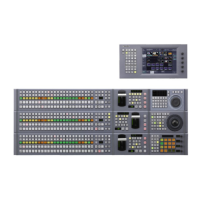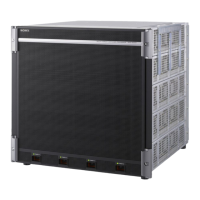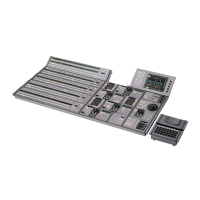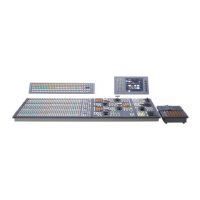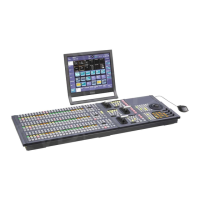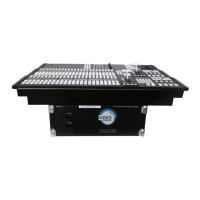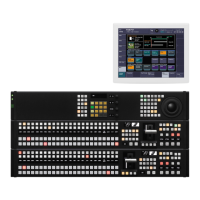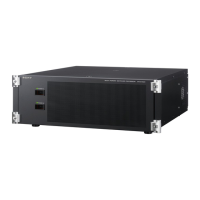Chapter 11 DME Operations
733
DME Special Effect Operations
• Detect changes in the luminance and chrominance signals separately, and
switch automatically between fields and frames. You can select the degree of
change detection.
• Detect changes in the luminance signal separately, and switch automatically
between fields and frames. You can select the degree of change detection.
• Do interpolation in field units.
• Do interpolation in frame units.
For input key signals, you can select from the following three methods.
• Detect changes in the luminance signal separately, and switch automatically
between fields and frames. You can select the degree of change detection.
• Do interpolation in field units.
• Do interpolation in frame units.
You can also select the number of pixels used in interpolation processing, and
select the method used to show the picture reduced or expanded.
Further, you can apply an anti-moire filter to reduce the moire patterns created
by interpolation.
Notes
• Interpolation processing is possible for the following signal formats and
DME systems.
– MVE-8000/8000A: 480i/59.94, 576i/50
– MVE-9000: 480i/59.94, 576i/50, 1080i/59.94, 1080i/50, 1080i/60
• The anti-moire filter function is only effective when the MVE-8000/8000A
is used in an HD system.
Selecting an interpolation method for input video signals
1
In the DME menu, select VF6 ‘Input/Output’ and HF3 ‘Process.’
2
In the <Video Field/Frame Mode> group, select the interpolation method
for the video signal.
Adaptive Y/C: Detect changes in the luminance and chrominance
components of the video signal separately, and switch automatically
between fields and frames.
Adaptive Y: Detect changes in the luminance component of the video
signal separately, and switch automatically between fields and frames.
Field: Do interpolation in field units. This gives natural movement,
suitable for moving video.
Frame: Do interpolation in frame units. This gives higher image precision,
suitable for still pictures.

